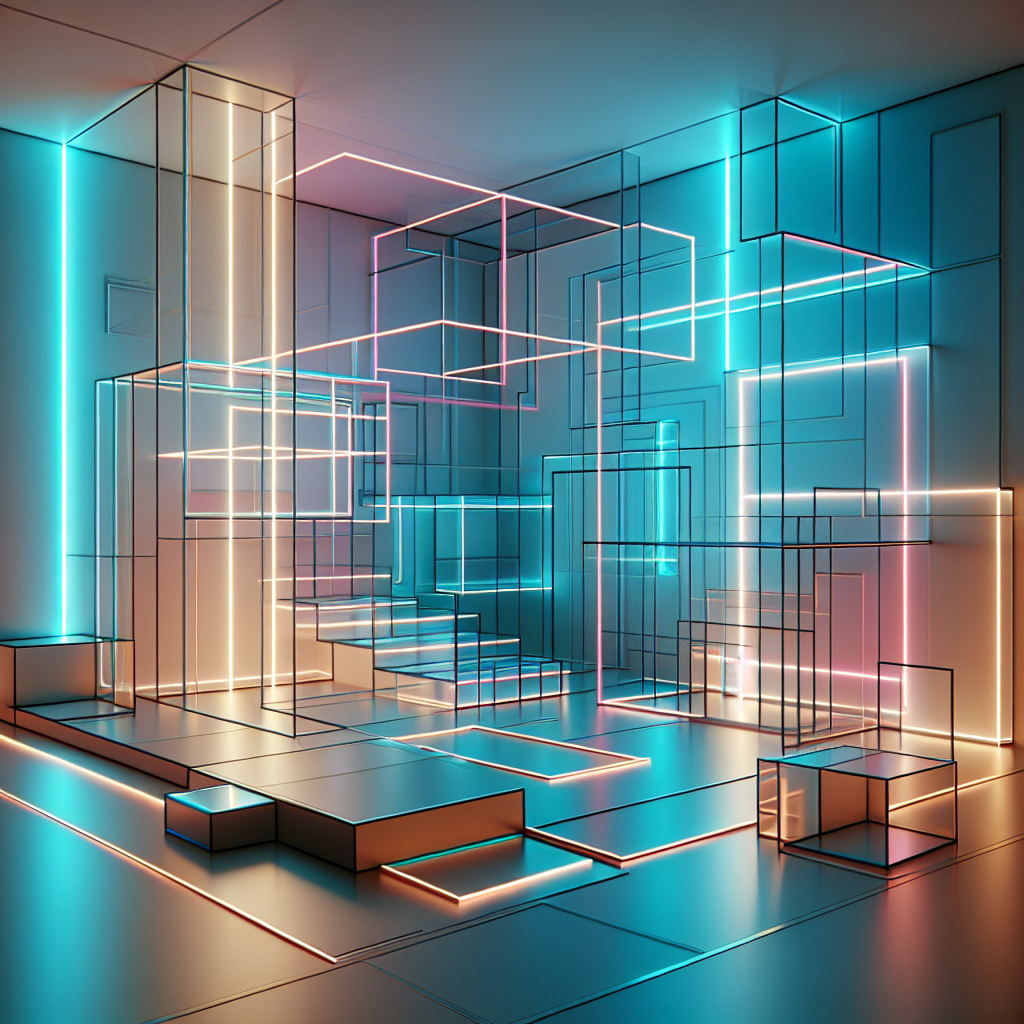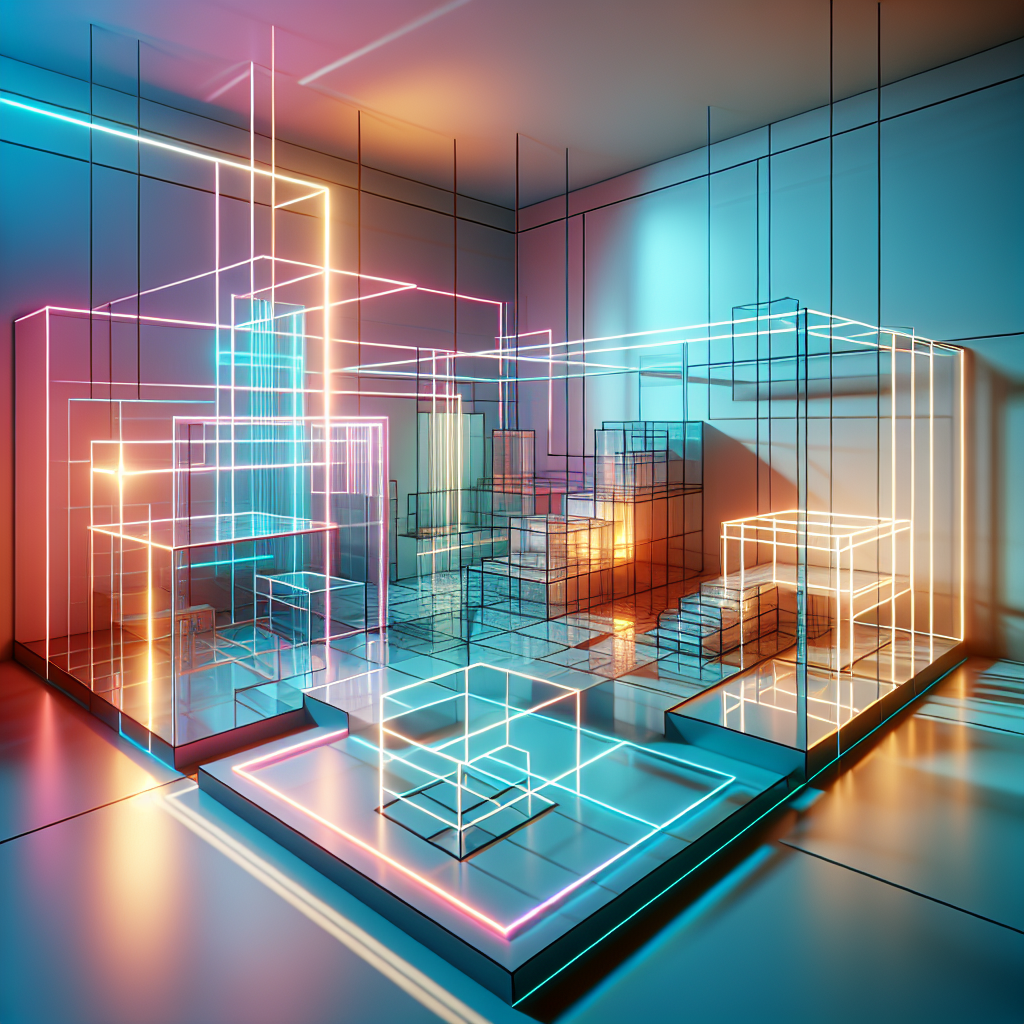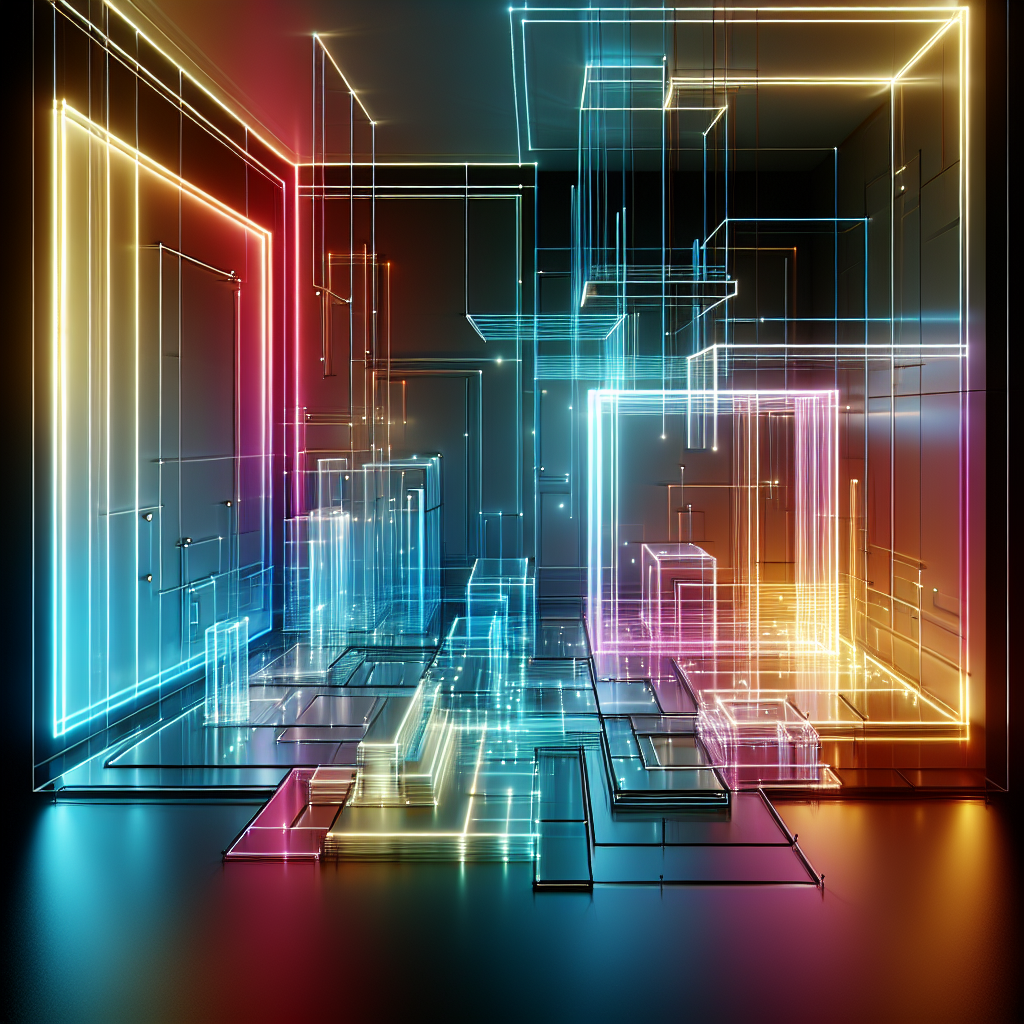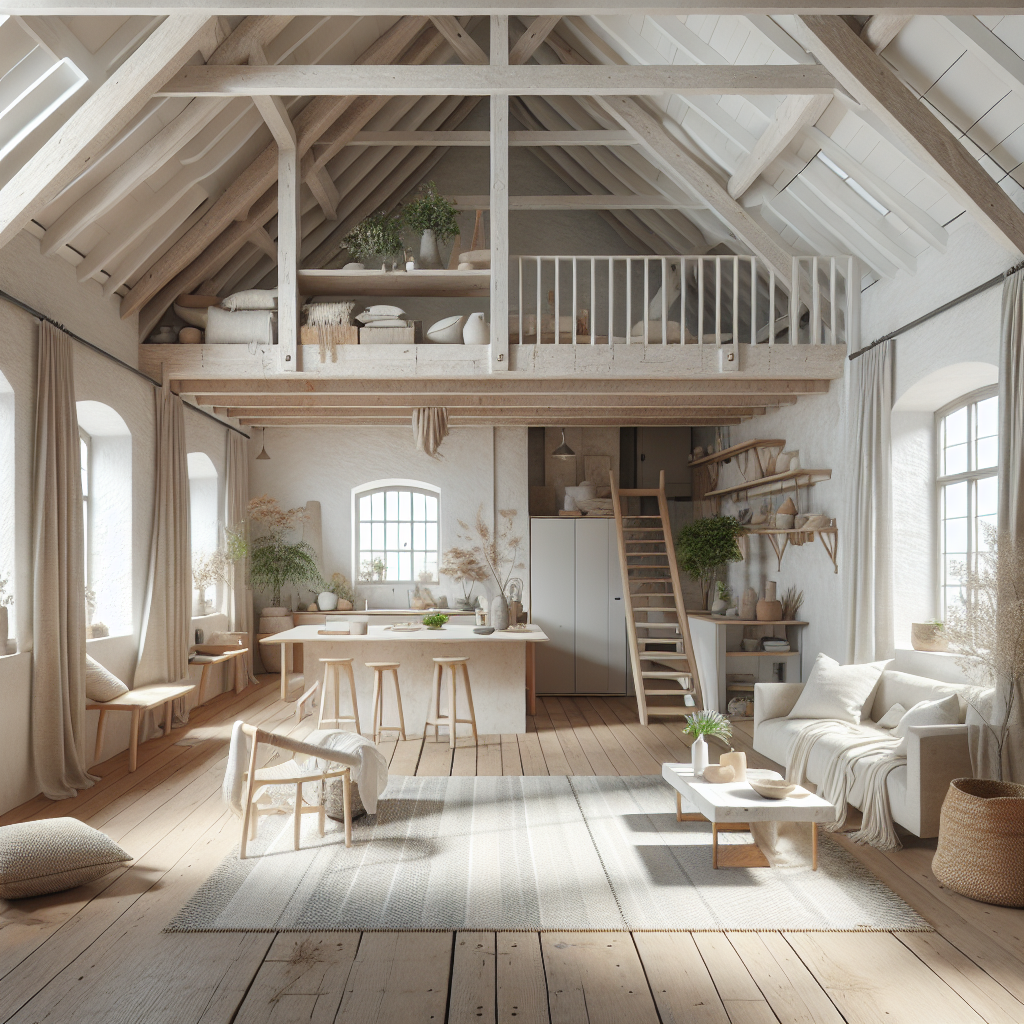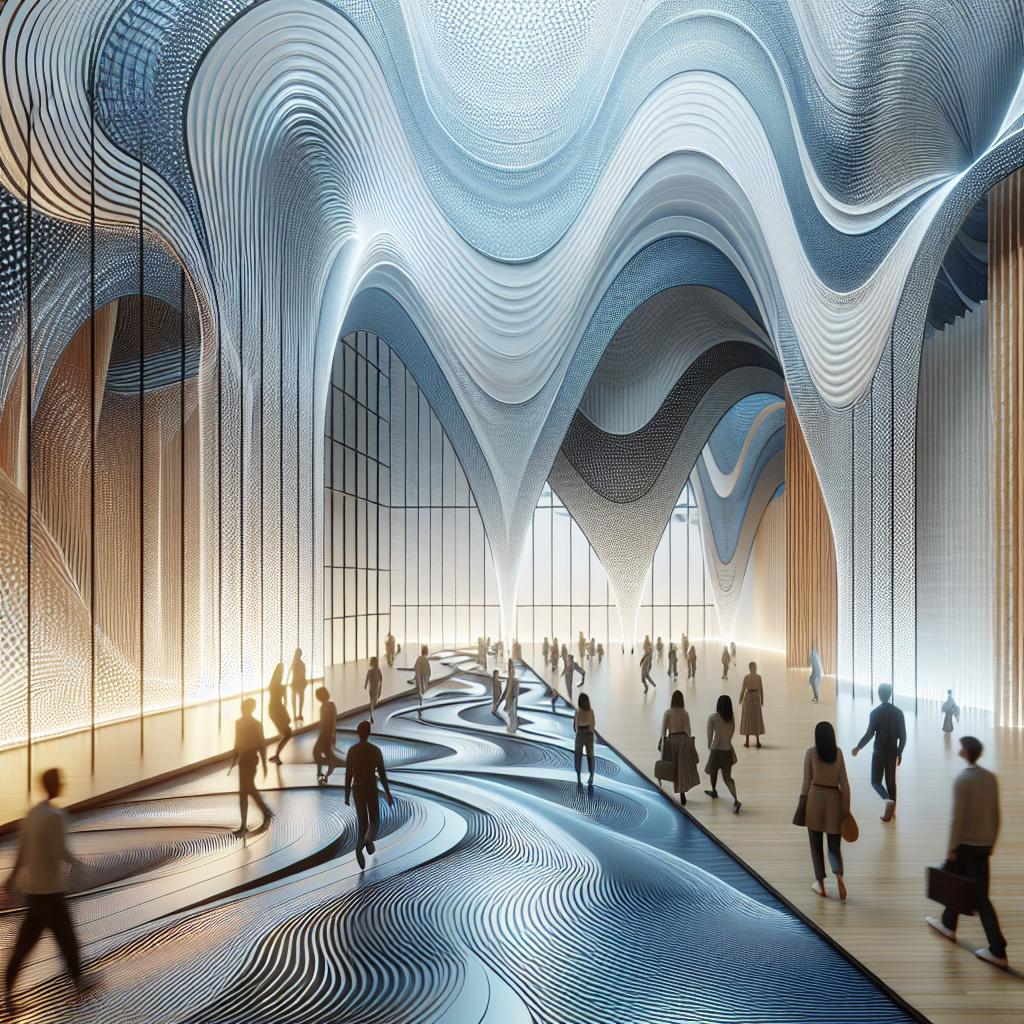Bauhaus in bold: neon crossing minimal shapes with luminous outlines
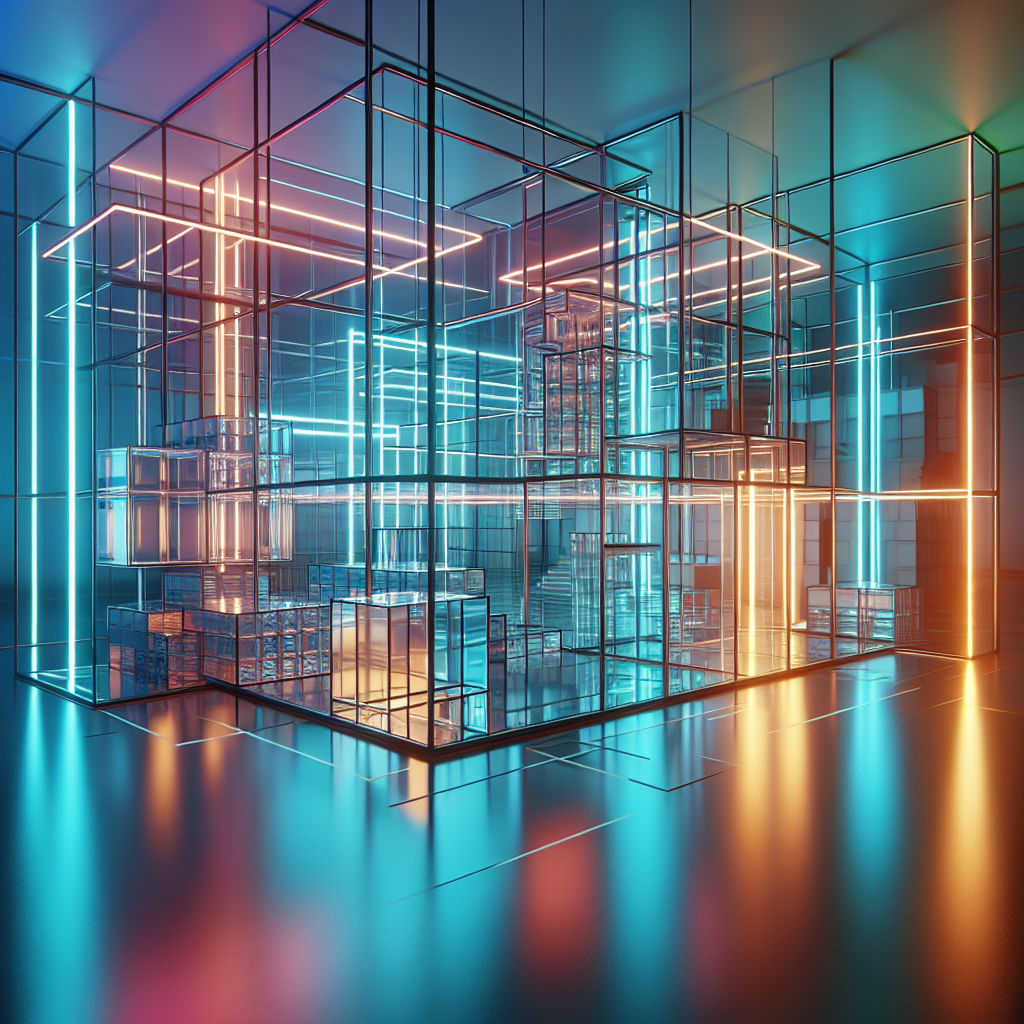
Bauhaus in Bold: Neon Crossing Minimal Shapes with Luminous Outlines
The Bauhaus movement has long stood as a symbol of disciplined simplicity—its geometric rigor and functional clarity defining much of twentieth-century modernism. Yet, in the current era of digital exuberance and immersive environments, a new aesthetic evolution is emerging: Bauhaus in bold. This contemporary revival infuses the clean geometries of the early modernists with neon light, chromatic gradients, and luminous outlines that reimagine minimalism through the lens of technology and emotion. The result is a striking synthesis—where form meets glow, and restraint meets radiance.
The Bauhaus Blueprint Revisited
Founded in 1919 by Walter Gropius, the Bauhaus school revolutionized design by merging art, craft, and technology. Its principles—simplicity, functionality, and the unity of form and purpose—shaped architecture and design for generations. Yet, as the twenty-first century unfolds, designers are rediscovering Bauhaus not as a static doctrine but as a living language adaptable to the sensibilities of the digital age.
Today’s reinterpretations are less about strict adherence to minimalism and more about exploring its expressive potential. In studios from Berlin to Seoul, designers are reimagining Bauhaus geometry with luminous neon edges, transparent materials, and responsive lighting systems. This aesthetic—at once nostalgic and futuristic—transforms minimal shapes into glowing statements of visual energy.
For a deeper historical context on the original movement, see this comprehensive overview of the Bauhaus movement, which traces its enduring influence on modern design.
From Geometry to Glow: The Rise of Luminous Minimalism
The resurgence of neon within minimal frameworks represents more than a stylistic choice—it signals a cultural shift. Where the early Bauhaus emphasized austerity, the new wave embraces sensory engagement. Architects and lighting designers are using illumination not as ornamentation but as a structural and emotional medium.
Consider the installations of Dutch designer Sabine Marcelis, whose resin forms and radiant edges create a dialogue between material and light. Her work channels the Bauhaus spirit of experimentation while amplifying it through color and luminescence. Similarly, the “Neon Corridor” project in Tokyo’s Shibuya district integrates ultra-thin LED lines along architectural edges, transforming circulation paths into glowing geometric experiences. The result feels like walking through a living Mondrian painting—minimal yet electric.
This aesthetic has found resonance in both interior architecture and product design. From luminous shelving systems to glowing furniture silhouettes, designers are exploring how light can define space without mass. The boundaries between physical and digital perception blur, echoing the immersive qualities seen in virtual reality-driven architectural visualization.
Neon Bauhaus: A Dialogue Between Past and Future
The term “Neon Bauhaus” has become shorthand for this hybrid aesthetic—one that fuses the clarity of modernism with the vibrancy of digital culture. It’s a language of contrasts: rigid geometry meets fluid light, minimal color palettes meet saturated gradients, and functional design meets experiential spectacle.
This evolution is visible in contemporary retail and hospitality interiors. Brands seeking to evoke both heritage and innovation are adopting luminous outlines as spatial signatures. A boutique in Copenhagen, for instance, uses glowing linear frames to define modular display zones, echoing the grid logic of Bauhaus architecture while evoking the allure of cyberpunk aesthetics. The interplay of light and structure transforms the store into a kinetic composition—part gallery, part laboratory.
Architectural theorists have noted parallels between this trend and the growing interest in bioluminescent lighting in architecture, where illumination is not merely functional but atmospheric and ecological. Both movements suggest a redefinition of light as a living material—one that interacts with users and environments dynamically.
Technology as a Medium of Expression
The technological advancements of the last decade have made it possible to realize what early modernists could only imagine. Ultra-efficient LEDs, programmable lighting systems, and translucent composites enable designers to craft precise luminous geometries that shift color and intensity in real time. This has given rise to a new discipline at the intersection of architecture, lighting design, and digital art.
In the context of sustainable design, these innovations also align with the principles of energy efficiency and material reduction. Many of these luminous installations consume minimal power while replacing heavier structural elements with light-based delineations. This echoes the ethos of net-zero architecture, where efficiency and aesthetics coexist harmoniously.
The result is a kind of “light architecture”—a discipline where the boundaries between object and atmosphere dissolve. Designers are increasingly treating light as both structure and narrative, shaping emotional responses through hue, rhythm, and intensity. In this way, the Bauhaus ideal of uniting art and technology finds new resonance in the digital era.
Emotional Geometry: The Human Dimension of Neon Minimalism
Beyond its visual appeal, the neon-infused Bauhaus revival speaks to a deeper human need for connection and stimulation in increasingly digital environments. Studies in environmental psychology suggest that dynamic lighting can influence mood, focus, and spatial perception. The subtle glow of a linear LED can transform a sterile corridor into a meditative passage; a softly pulsating outline can make a static object feel alive.
This emotional dimension marks a departure from the rationalist detachment often associated with early modernism. Where the original Bauhaus sought universality through reduction, today’s designers seek intimacy through interaction. The luminous line becomes a bridge between the physical and the psychological—a visual heartbeat within minimalist space.
In residential interiors, this manifests as ambient lighting integrated into architectural seams—under stair treads, along ceiling coves, or tracing the perimeter of furniture. The effect is subtle yet transformative, creating depth and rhythm without clutter. It’s minimalism reimagined for the age of experience.
Case Studies: Where Bauhaus Meets the Future
Several recent projects exemplify this new aesthetic paradigm. The “Glow Grid Pavilion” by Studio Precht, unveiled in Vienna in 2024, uses modular aluminum frames embedded with programmable neon tubes. Each frame corresponds to a Bauhaus-inspired geometric unit, yet the interplay of light transforms the structure into a living organism of shifting color. Visitors move through an environment that feels both mathematical and emotional—a digital homage to Gropius’s original vision.
Similarly, the “Chromatic Courtyard” installation at Milan Design Week reinterpreted the Bauhaus color theory through light gradients projected onto translucent planes. The result was a dynamic, walkable composition of color and form—proof that the Bauhaus legacy continues to evolve through new media.
Even in urban contexts, the influence is palpable. Public spaces are increasingly adopting neon-outlined geometries to enhance wayfinding and identity. These interventions transform the nocturnal cityscape into a living canvas, merging functionality with artistic expression—an idea reminiscent of the experimental ethos seen in contemporary architectural trends worldwide.
The Future of Luminous Modernism
As architecture and design continue to navigate the balance between digital immersion and human sensibility, the Bauhaus in bold aesthetic offers a compelling blueprint. It demonstrates that minimalism need not be cold or static—it can pulse, glow, and breathe. By merging the clarity of form with the dynamism of light, designers are crafting spaces that are both intellectually rigorous and emotionally resonant.
In this sense, the luminous Bauhaus revival is not a departure from modernism but its natural evolution. It carries forward the school’s original ambition—to unite art, technology, and life—into a new era defined by interactivity and atmosphere. The line, once drawn in ink, now glows in light; the grid, once rigid, now vibrates with energy. The Bauhaus has not dimmed—it has simply found a new way to shine.
As we move deeper into the age of experiential design, this radiant minimalism will likely continue to shape both public and private environments. Whether through glowing façades, interactive installations, or softly illuminated interiors, the neon Bauhaus aesthetic reaffirms that
